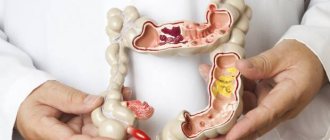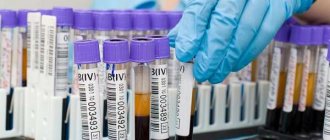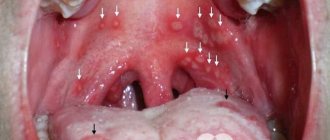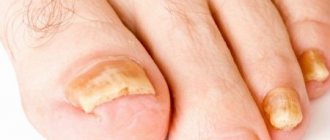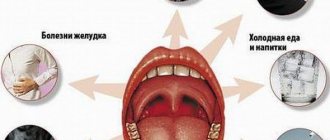What does this analysis determine?
The selected diagnostic method indicates the number of cellular elements in a certain volume of urine:
- red blood cells;
- leukocytes;
- cylinders
Usually the middle portion of morning urine is examined. First of all, the urine pH level is measured. Next, the urine is centrifuged at 3000 rpm for 3 minutes. The upper layer of liquid is selected by examining only 0.5-1 ml of sediment, where the number of blood cells and renal tubular epithelium is calculated. Quantitative determination of erythrocytes, leukocytes, cylinders is carried out in a Goryaev, Bürker or Fuchs-Rosenthal chamber using a light microscope.
Causes and danger of deviations
When deciphering the analysis form, doctors take into account the norm of the parameters being studied. Each value is determined in 1 ml of liquid. Patients can also navigate the obtained data, especially since all parameters are clearly reflected in the table.
| Leukocytes | Up to 2 thousand |
| Red blood cells | No more than 1 thousand |
| Cylinders | Not higher than 20 |
Normally, biological fluid should not contain protein, bacteria, epithelial cells, or pathological casts. Their appearance in the analysis results indicates the presence of any deviations. Values may be exceeded individually or collectively. The latter indicates the development of a serious disease.
How to collect a urine test according to Nechiporenko?
If possible, collect urine that has been in the bladder for 2-3 hours, which is why health care providers recommend collecting morning urine. Before urinating in the morning, prepare a sterile dry container that can hold 50-100 ml (this is exactly what is needed for urine analysis according to Nechiporenko). Also use sterile wipes.
Follow these steps:
- Before starting the urine collection procedure, women should wash their external genitalia with soap and warm water.
- After cleaning your hands and perineum with sterile wipes, sit on the toilet. Open the inner folds of the labia and wipe with wipes from front to back.
- Cover the vaginal area with a piece of sterile bandage to prevent urine contamination by bacteria and epithelium from the genitals.
- Release some urine into the toilet, then stop the flow and hold the urine container a few centimeters from the urethra.
- When you have collected an average amount of urine, finish urinating into the toilet.
Adhering to similar simple rules of sterility, men also collect urine.
If a urine test according to Nechiporenko needs to be collected from a child, then for this you will need a special plastic container for urine with a sticky strip at one end. Wash your baby with soap and warm water, then attach the container to a girl's labia or place the penis in the middle of the container for a boy. Check frequently to see if urine has collected. Since children can sometimes move the container, it will take you a few tries to get it right. The collected urine is poured into dry, sterile containers. After collecting the sample, screw the lid on tightly without touching the inside of the cup or lid. It is best to take the urine to the laboratory for testing immediately, but not later than 1-2 hours; in the latter case, place the container in a plastic bag and put it in the refrigerator.
Collection of material
Well, everything is clear with the preparation rules. Now let's discuss how to collect a urine test according to Nechiporenko. By the way, a very important nuance: women are not recommended to donate biological material during their menstrual periods.
Now the process itself. First, it is necessary to carry out a thorough hygienic toilet of the genitals. Only the first morning urine is taken for research. To collect it, you need to release a small amount of liquid into the toilet. You need to urinate in it for 2-3 seconds, after which you can replace the jar. You need to collect approximately 100 ml of urine in a container.
When talking about how to collect a urine test according to Nechiporenko, it is important not to forget that the jar used must be clean and dry. It is better to purchase a special container at the pharmacy. If you want to use some kind of homemade jar, then it must not only be thoroughly washed, but also sterilized. However, in most laboratories, as a rule, such containers have not been accepted for several years. So to speak, these are already relics of the past.
Regardless of which container you used, the material must be delivered to the laboratory within two hours after collection. Only compliance with all the above conditions can guarantee a reliable result.
When is it necessary to perform a urine test according to Nechiporenko?
Collecting urine for the Nechiporenko test is the least invasive procedure, allowing you to obtain a urine sample for examination and culture. The protocol must be followed precisely during collection to ensure reliable results from uncontaminated samples.
The analysis allows you to detect urinary tract infections, and it is also part of a complete examination of the body. Urinalysis according to Nechiporenko is necessary in the following cases:
- in the diagnosis of urinary tract, bladder and kidney infections;
- with stress urinary incontinence;
- to determine the pH level of urine in pregnant women;
- with urolithiasis.
It is very important to correctly take a urine test according to Nechiporenko during pregnancy, since a change in pH (below 4.5 and above indicates a pathological condition of the woman’s body. Only a urologist can offer the correct interpretation of the results.
indicates a pathological condition of the woman’s body. Only a urologist can offer the correct interpretation of the results.
How the research is carried out
Many patients are interested not only in deciphering the urine test according to Nechiporenko, they are curious about what happens to the material they collected in the laboratory. People want to know exactly how research is done. The analysis is carried out as follows. A portion of urine brought to the laboratory is mixed, and 5-10 ml is poured into a test tube. After this, the container with the selected liquid is centrifuged for three minutes at a speed of 3500 rpm. After completing the procedure, the top layer of urine is drained, leaving only 1 ml of sediment in the test tube, which must be mixed well. It is poured into a special chamber, where red blood cells, casts and, of course, leukocytes are counted.
Interpretation of urine analysis according to Nechiporenko
The analysis is relatively simple and quite accurately diagnoses the presence of pyelonephritis, cystitis and other inflammatory processes in the body. Correct interpretation of urine test results is very important.
Normally, urine does not contain red blood cells because they are too large to pass through the kidney tubules. Any red blood cells in a urine test indicate hematuria and are a sign of a potential disorder.
White blood cells (leukocytes) and transitional epithelial cells can be present in the urine; only an increase in their concentration above 2000 per 1 ml in men and 4000 in women indicates a problem with the kidneys.
The permissible number of red blood cells (erythrocytes) should not exceed 1000, and renal casts - no more than 20 per 1 mm³ of urine. Renal tubular cells (casts) may be present in the assay, but they are usually disintegrated by the time of testing, so the presence of intact casts indicates renal tubular disease.
Deviation from the norm of these blood cells during microscopic examination of urine is an important diagnostic sign of kidney infection, urolithiasis, cystitis, pyelonephritis, poisoning with toxic substances or drugs and other human pathological conditions.
Deviations from the norm in adults
An increase in the level of leukocytes in the urine may indicate syndromes and diseases:
- Pyelonephritis, occurring in acute form.
- Acute cystitis.
- Nephrotic syndrome.
- Urethritis.
- Prostatitis.
- Urolithiasis in the acute stage.
- Systemic lupus erythematosus.
- Kidney tuberculosis.
- Appendicitis.
- Acute pancreatitis.
- Feverish syndrome.
An increase in the level of red blood cells in the urine may indicate the presence of the following diseases:
- Urolithiasis disease.
- Kidney infarction.
- Various types of jades.
- Polycystic kidney disease.
- Kidney injury or tumor.
- Kidney tuberculosis.
- Renal vein thrombosis.
- Prostate hypertrophy.
- Congestive heart failure.
- Systemic lupus erythematosus.
- Leukemia.
- Vasculitis.
- Malignant hypertension.
- Vitamin C deficiency.
In this urine study, the presence of hyaline casts is acceptable.
The appearance of granular, waxy, epithelial and erythrocyte casts in any quantity is mandatory evidence of the presence of diseases of the urinary system.
An increase in the level of hyaline casts can occur with the following syndromes and diseases:
- Nephrotic syndrome.
- Physical fatigue of the body.
- Chronic kidney failure.
- Congestive heart failure.
- Nephropathy in diabetes mellitus.m
- Psychological stress.
- Overheating and dehydration of the body.
- Malignant hypertension.
An increased level of epithelial casts may indicate the presence of such problems in the body:
- Acute necrosis of renal tubules.
- Eclampsia.
- Poisoning with various heavy metals.
- Various types of jade.
An increase in the level of waxy cylinders may indicate the presence of the following syndromes and diseases of the body:
- Nephrotic syndrome.
- Chronic kidney disease.
- Nephropathy in diabetes mellitus.
- Amyloidosis.
- Kidney transplant rejection.
An increase in the level of granular cylinders may indicate the presence of the following diseases and syndromes:
- Renal failure, acute or chronic.
- Kidney tuberculosis.
- The presence of physical overstrain of the body.
- Manifestation of toxicosis in pregnant women.
- Chronic poisoning of the body with types of heavy metals.
- Various types of jade.
- Viral infections of the body.
An increase in the level of red blood cell casts may indicate the presence of the following syndromes and diseases:
- Renal vein thrombosis.
- Acute glomerulonephritis.
- Malignant hypertension.
- Kidney infarction.
Signs of abnormalities and possible diseases
Hematuria and leukocyturia are abnormal findings in urinalysis.
| Elevated red blood cells (more than 1000) | Elevated leukocytes (more than 2000) |
| Nephrotic symptom complex (a complication of chronic renal diseases), damage to the glomeruli (glomeruli of the kidneys) of an immune-inflammatory nature (glomerulonephritis), infarction (necrosis) of the kidney, impaired filtration and excretory functions of the kidneys of a chronic nature (CRF or chronic renal failure), urolithiasis (urolithiasis) , infectious-purulent inflammation of the walls of the bladder (purulent cystitis), the presence of a benign or malignant tumor, infectious damage to the kidneys with Koch's bacillus (nephrotuberculosis) | Inflammation of the walls of the bladder (cystitis), inflammatory disease of the collecting system and renal parenchyma (pyelonephritis), urolithiasis, death of kidney tissue caused by blocking the lumen of the renal arteries (renal infarction) |
In men, leukocyturia indicates inflammation of the prostate gland (prostatitis). CRF is the final (irreversible) stage of renal complications that develop in various pathologies of the genitourinary, endocrine and other body systems. Renal infarction is a fairly rare urological pathology and requires confirmation using renal angiography. The disease most often occurs as a complication of chronic diseases of the cardiovascular system.
Cystitis is diagnosed in 80% of cases in the female half of the population. This is due to the peculiarities of the anatomical structure of the female genital organs, in particular the short and wide urethra (urethra). Nephrotuberculosis (kidney tuberculosis) develops, as a rule, against the background of advanced bone or pulmonary tuberculosis.
Results of a urine test for the presence of casts
An excess of hyaline casts (more than 20) allows one to suspect:
- pyelonephritis;
- chronic or acute damage to the glomeruli;
- severe arterial hypertension;
- incorrect use of diuretic (diuretic) medications.
Considering that there should be no other cylinders in the urine, their presence in the test results indicates possible chronic diseases or a state of intoxication of the body.
Cylindruria as a clinical sign
| Presence of waxy cylinders | Kidney disease with characteristic extracellular deposition in the renal tissue of a mixture of protein and saccharides (renal amyloidosis), nephrotic symptom complex, otherwise nephrotic syndrome, chronic renal failure |
| Detection of red blood cell casts | Severe form of hypertension (malignant arterial hypertension), blockage of the renal veins due to the formation of a blood clot in the vessels (vein thrombosis), necrotic kidney damage |
| Identification of epithelial casts | Acute damage to the tubular cells of the renal apparatus (tubular, otherwise tubular necrosis), infectious viral diseases, exceeding the permissible dose of drugs containing salicylates (aspirin, non-steroidal anti-inflammatory drugs, etc.) and immunosuppressants of the cyclosporine series (Cycloral-FS, Cyclosporin, Sandimmune Neoral etc.), intoxication of the body with ethylene glycol, ether, phenols, heavy metals |
| Presence of granular cylinders | Lead vapor intoxication, acute or chronic kidney diseases (pyelonephritis and glomerulonephritis), infectious viral diseases |
Acute tubular necrosis in most cases provokes the development of renal failure. Amylodosis of the kidneys is characterized by the manifestation of a nephrotic symptom complex (high protein content and a violation of the ratio of protein fractions, hypercholesterolemia, edema). Hematuria, leukocyturia and cylindruria (in combination) leave no doubt that the patient has serious diseases of the urinary system.
Additionally
Normal indicators of red blood cells, leukocytes and casts in the urine may be distorted for subjective reasons:
- incorrectly performed procedure for collecting urine in a container;
- poor nutrition on the eve of the test (drinking alcoholic beverages and fatty foods);
- intensive sports training (other physical activity) before the procedure;
- untimely delivery of biomaterial to the laboratory;
- unstable psycho-emotional state (stress, nervous overload).
Important! Failure to comply with medical instructions for collecting biomaterial (urine) is the main reason for inaccurate research results.





